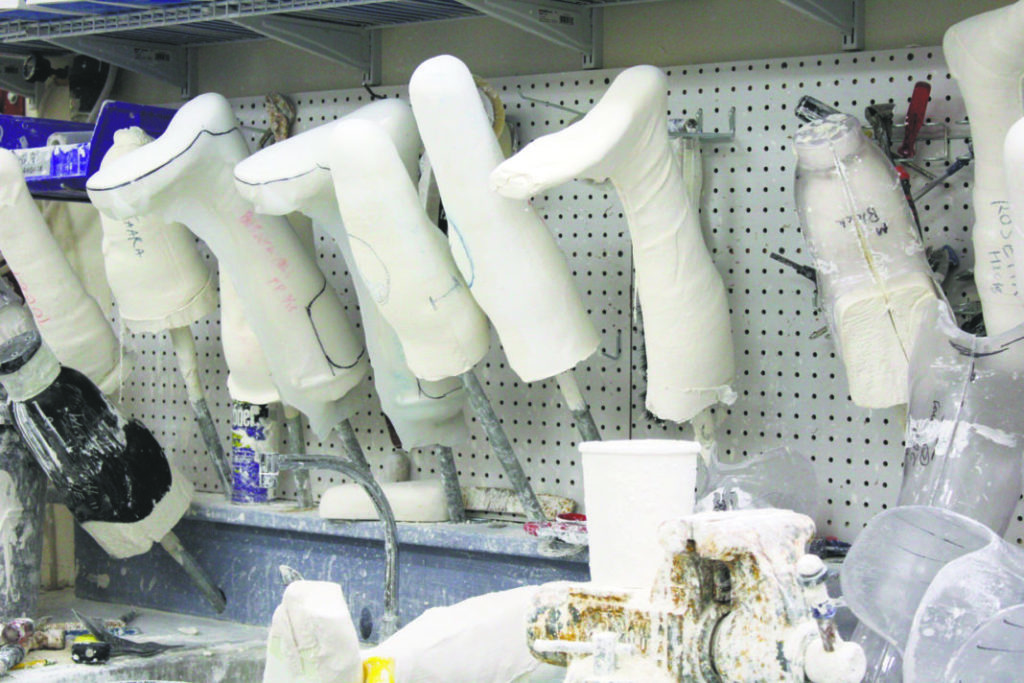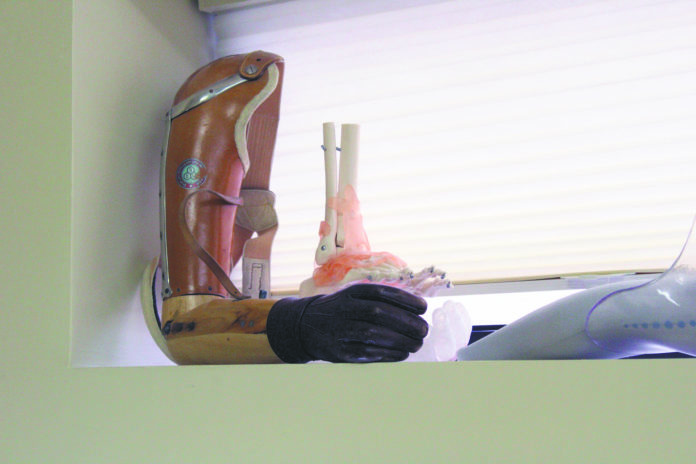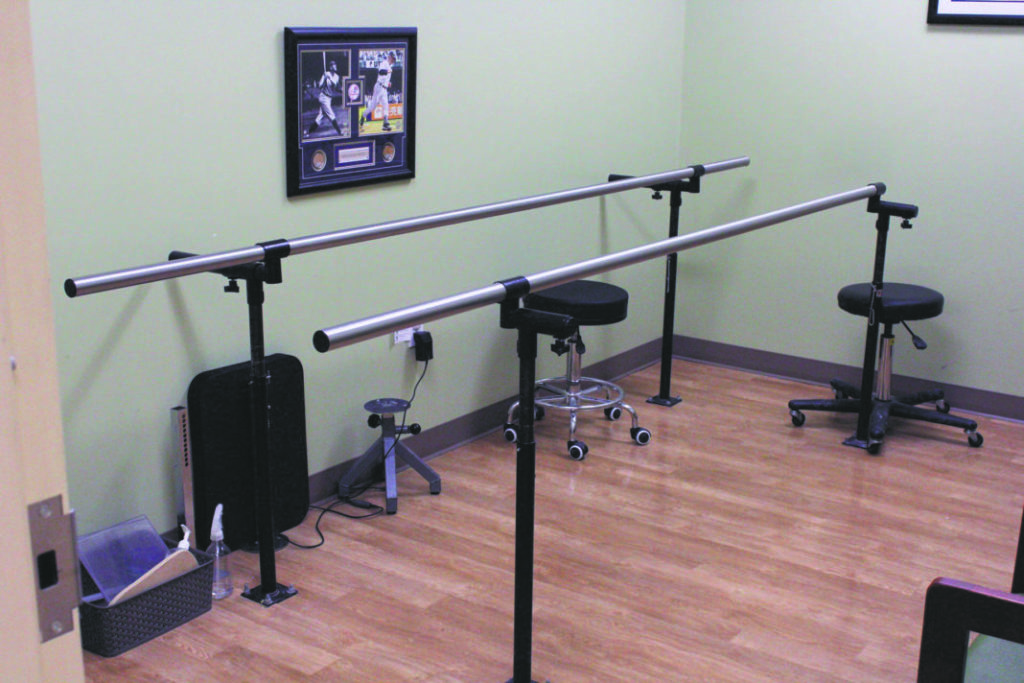
According to the Amputee Coalition of America, there will be 3.6 million people living with some type of limb amputation by the year 2050. In order to bring awareness to this issue, the Amputee Coalition of America has designated the month of April as Limb Loss Awareness Month.
For more than 15 years, the clinical staff at the Albertson-based facility, Progressive Orthotics and Prosthetics which is located at 1111 Willis Ave., has given its patients a new outlook on life—especially for those whose life suddenly takes an unexpected turn.
“The only limitations you’ll have [as an amputee] is what you put on yourself,” said certified prosthetist and co-owner of Progressive O&P, Dan Bastian. “If you want to do something, you’ll be able to do it.”

As an amputee himself, Bastian understands what his patients go through when they walk through the facility’s door. At only 15 years old, Bastian was diagnosed with osteogenic sarcoma in his right leg. After countless unsuccessful reconstructive surgeries to repair the damaged bone and musculature, Bastian made the hard decision to have his right leg amputated six inches below his hip and has walked with a prosthesis ever since.
Despite his disability, Bastian who resides in Massapequa with his family, stays active by golfing, hiking, water skiing, snow skiing and playing baseball.
Uniquely enough, Progressive O&P has an on-site laboratory where the facility’s certified practitioners supervise every aspect of the fabrication and design of patient’s prosthetics and orthotics. Everything at Progressive O&P is handmade to suit each patient’s individual needs as well. Each customization begins with the casting of a patient’s limb or residual limb.

“Sometimes we use plaster or sometimes fiberglass [for the casting],” said Bastian. “It all depends on the shape of the limb. We take the actual mold of it and the practitioners fill it with plaster, put it into the sandbox and then we modify it by hand.”
Once patients receive their prosthetics, more specifically for their legs, Bastian warns them to take it easy in the beginning, saying that patients need to build up a tolerance first.
“If you wear your new prosthesis for the entire day like I do, you will get a breakdown on your leg,” explained Bastian. “You’ll open up a sore spot and you’ll have a wound on your limb. That’s what you need to avoid. You need to build a toughness to the skin.”
The facility attracts patients from across Long Island and even internationally as well, with one patient coming as far away as India.
“I think Progressive O&P is a great facility,” said Leonard Brandenberg, a North Bellmore resident and patient of Progressive O&P. “They do a lot of great things for a lot of people. My practitioner Abe [Mathews] is really helpful and resourceful too.”
Brandenberg had a below the knee amputation last September due to a blood clot in his left leg.

For veterans who have lost limbs from war, Progressive O&P is also a VA certified facility and has a working relationship with the U.S. Department of Veterans Affairs. According to the most recent statistic report from the Amputee Coalition of America, 1,588 military personnel lost a limb as result of the wars in Afghanistan and Iraq.
Progressive O&P has two areas made specifically for walking observation where patients’ prosthetics and orthotics are aligned or adjusted so they can walk as smoothly as possible. For advanced prosthesis users—in the facility’s gait area—there are ramps and practice stairs that allow patients to hone in their ascending and descending skills.
Being an amputee is costly however. Lifetime healthcare costs for people with limb loss is nearly double compared to people living without limb loss. Sometimes health insurance doesn’t even cover the cost of a prosthetic. Luckily, people can help amputees by donating to various nonprofit organizations that specialize in limb loss.
People can make donations to the Amputee Coalition and its youth camp for children and teens who live with limb loss, the Wounded Warrior Project for veterans, Limbs For Life Foundation and the Lost Limbs Foundation.
Source: http://mineolaamerican.com/2018/04/a-progressive-stance/


















